Does your heart sink every time a colleague says, “Do you have a second?” Do you automatically say “yes” to every request, only to drown in a sea of deadlines and resentment later?
If you’re nodding along, you’re not alone. Many of us believe that saying “yes” is the key to being a good team player. But this people-pleasing paradox often backfires, leading to burnout, low-quality work, and damaged relationships. The very harmony you’re trying to protect gets eroded by unspoken stress and unmet expectations.
But what if you could say “no” confidently, without feeling guilty or jeopardizing your career?
This guide will teach you exactly that. We’ll walk you through five actionable steps to turn your reluctant “yes” into a strategic and respectful “no.” You’ll learn to protect your time, focus on what matters, and earn a new level of respect from your colleagues.
Step 1: Understand Why It’s So Hard to Say No in the First Place
Before you can change a habit, you have to understand it. Your reluctance to say “no” isn’t a character flaw; it’s a mix of brain chemistry and deep-seated emotional programming.
Your Brain Is Wired to Say ‘Yes’
Think of your brain as a reward-seeker. When you agree to help someone and they thank you, your brain releases a feel-good chemical called dopamine. This creates a powerful feedback loop: you get a request, you say yes, and you get a small chemical reward, training you to do it again.
At the same time, another hormone called oxytocin—the “social glue”—is released when we engage in helpful, pro-social behaviors. This makes us feel safe and connected to our “tribe.” Saying “no” can feel like you’re risking that connection, which goes against a primal instinct for belonging.
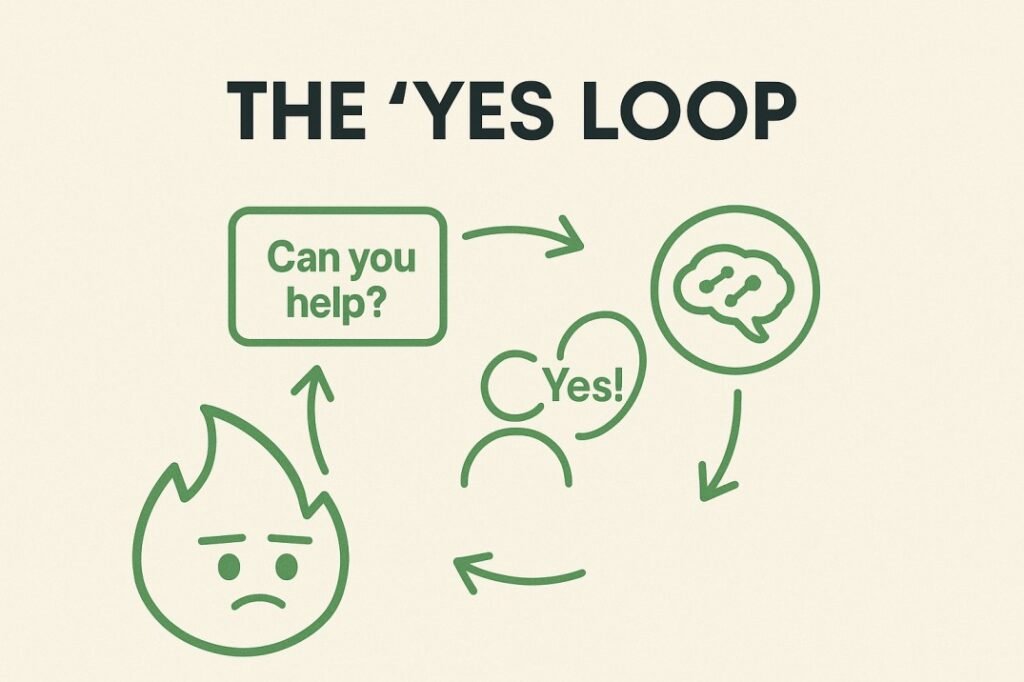
You Have to Push Past the “Emotional Gauntlet”
Beyond brain chemistry, you’re also dealing with powerful emotions:
- Fear: The biggest hurdle is often the fear of conflict. You might worry about disappointing your manager, being seen as unhelpful, or even damaging your professional relationships.
- Guilt: We’re often conditioned to believe that saying “no” means we’re not a team player. This can trigger a deep sense of guilt, as if we’re failing to meet our obligations.
- Shame: Shame is deeper than guilt. It’s the feeling that if you set a boundary, you’ll be rejected because you are somehow flawed or unworthy.
For many, this pattern is part of a “people-pleaser” archetype, a behavior often learned in childhood to keep others happy and feel safe. Your self-worth can become tangled up with others’ approval, making a simple “no” feel like a threat to your identity.
Step 2: Build Your Proactive Defense System
The best way to say “no” is to create a system where the “no” is a logical conclusion, not an emotional outburst. This means making your workload visible and your priorities clear.
Create a “Single Source of Truth”
You can’t confidently say you’re at capacity if your commitments are scattered across sticky notes, emails, and your own memory. You need a central, visible system.
Workload management tools like Asana, Jira, or even a detailed shared calendar are perfect for this. They allow you to:
- Track all your tasks in one place.
- Visualize your workload for the week or month.
- Share this transparent view with your manager.
This changes the conversation. Instead of a vague, “I’m too busy,” you can say, “As you can see on my project board, I’m fully booked with high-priority tasks until Tuesday.” It depersonalizes the refusal and turns it into a data-driven discussion about resource allocation.
Prioritize Your Work with the Eisenhower Matrix
Once all your tasks are visible, you need to prioritize them. The Eisenhower Matrix is a simple but powerful tool for sorting tasks into four quadrants:
- Urgent & Important (Do First): Critical tasks with immediate deadlines.
- Important & Not Urgent (Schedule): Long-term strategic goals that need planning.
- Urgent & Not Important (Delegate): Tasks that need to be done now but don’t require your specific skills.
- Not Urgent & Not Important (Eliminate): Low-value activities and distractions.
This framework gives you a clear logic for declining or delegating requests that fall into the bottom two quadrants, protecting your energy for work that truly matters.
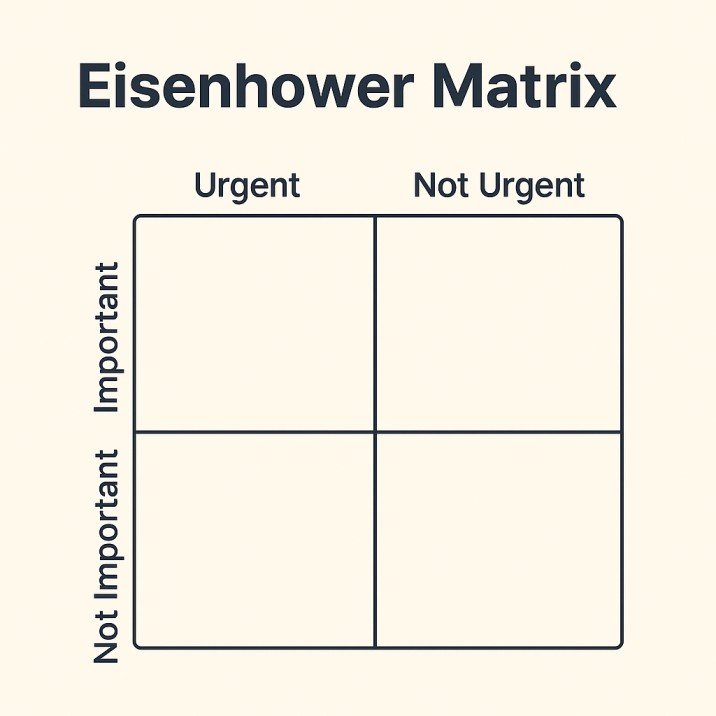
Step 3: Master the “Positive No” Framework
Now for the communication itself. Developed at Harvard, the “Positive No” is a three-step framework that allows you to refuse a request while strengthening the relationship. It’s a simple “Yes-No-Yes” sequence.
Step 1: Yes! (Start with Your Priority)
This first “yes” isn’t to the request—it’s a “yes” to your own core interest or an existing priority. This anchors your “no” in a positive commitment that the other person is likely to respect. It explains the why behind your refusal.
- Example: “My ‘yes’ is to delivering the Alpha Project on time, which we all agreed is the team’s top priority right now.”
Step 2: No. (State Your Limit Clearly)
This is where you deliver a calm, clear, and matter-of-fact “no.” Avoid long, rambling apologies or defensive language. It’s a simple statement of fact.
- Example: “For that reason, I can’t take on this new data analysis task at this time.”
Step 3: Yes? (Propose a Helpful Alternative)
The final step is to pivot back to a “yes” that focuses on the other person’s goal. By offering a constructive solution, you show that you are collaborative, not obstructive.
- Example: “How about we find time to review this first thing next week? Alternatively, Maria has a lot of experience with this type of analysis and might have the capacity to help now.”
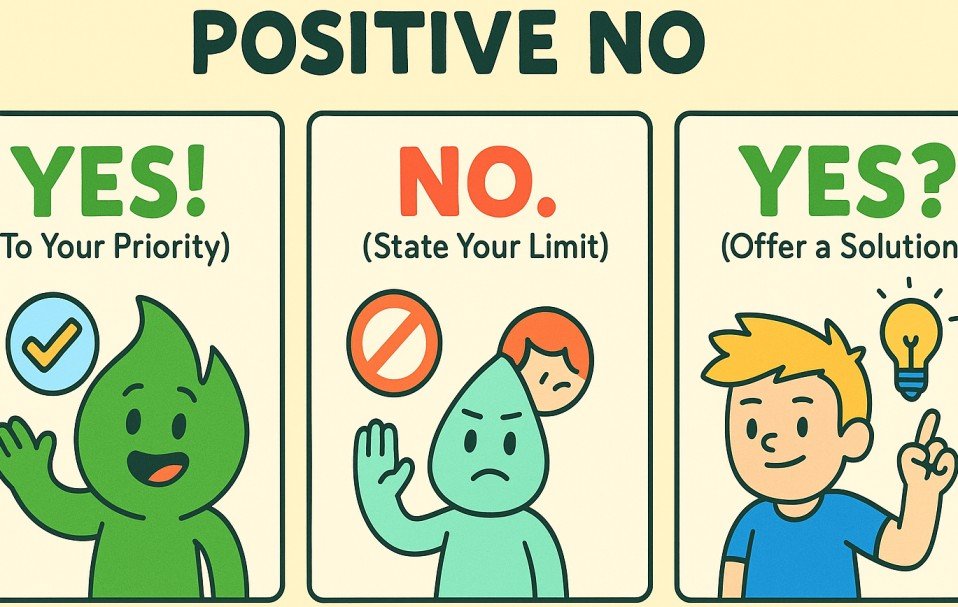
Step 4: Keep These Scripts in Your Back Pocket
Having a few go-to phrases makes saying “no” much easier in the moment. Here are some scripts you can adapt for common situations.
| The Request | The Strategy | Sample Script (Polite & Firm) |
| “Can you take on this extra project?” | Positive No: Align with Priority | “I appreciate you trusting me with this. My primary focus right now is on [Priority Project], which is on a tight deadline. To ensure its quality, I can’t take this on. Could we look at this again after, or is there someone else who could tackle it?” |
| “Can you join this last-minute meeting?” | Buy Time & Verify Value | “Thanks for the invite. I’m in a deep work block on the Q3 report to meet our deadline. Could you let me know the key objective of the meeting so I can see if my input is critical, or if I can catch up on the notes afterward?” |
| “Can you work late/on the weekend?” | Boundary Reinforcement | “I understand this is urgent, but I’m unable to work this weekend due to a prior commitment. I’ll be sure to prioritize this first thing Monday morning to help us catch up.” |
| A request for “office housework” (e.g., planning a party) | Delegate & Empower | (With a smile) “You know, I organized the last team event. Let’s give someone else the opportunity this time. Perhaps John would be great at it?” |
| A request outside your expertise | Redirect to an Expert | “Thank you for thinking of me. This falls a bit outside my area of expertise, and I’m concerned I wouldn’t be able to deliver the quality you need. I believe [Colleague’s Name] is the resident expert on this and would be a much better resource.” |
Step 5: Tailor Your “No” to Your Audience
A “no” to your boss sounds different from a “no” to a peer. Adjusting your approach based on the power dynamic is key to maintaining good relationships across the board.
Saying “No” to Your Boss
The goal here is not to reject work but to collaborate on priorities. Frame your “no” as a request for guidance.
- What to do: Present the new request alongside your current approved tasks and ask your manager to help you prioritize. This respects their authority while making the trade-offs clear.
- Script: “Thank you for this. Right now, I’m working on Project A and B, which we planned for this week. To make sure I do high-quality work, could you help me clarify which of these three items should be my top priority?”
Saying “No” to a Colleague
With peers, the goal is to protect your time while remaining supportive. The “Positive No” framework is perfect for this.
- What to do: Be clear and direct, but pivot quickly to offering an alternative solution. This shows you’re still a team player.
- Script: “I’d love to help, but I’m completely swamped with the budget report until Thursday. Have you thought about asking David? He worked on something similar and might have some good ideas.”
Saying “No” to a Client
This is a delicate balance. You need to manage the project scope without damaging the partnership.
- What to do: Reaffirm your commitment to their success while explaining the limitation. Then, propose a compromise that still delivers value.
- Script: “We appreciate you bringing this to us. Based on our agreed scope, adding this now would delay the core project timeline. We can either add it to the roadmap for the next phase, or scope it as a separate mini-project. Which would you prefer?”
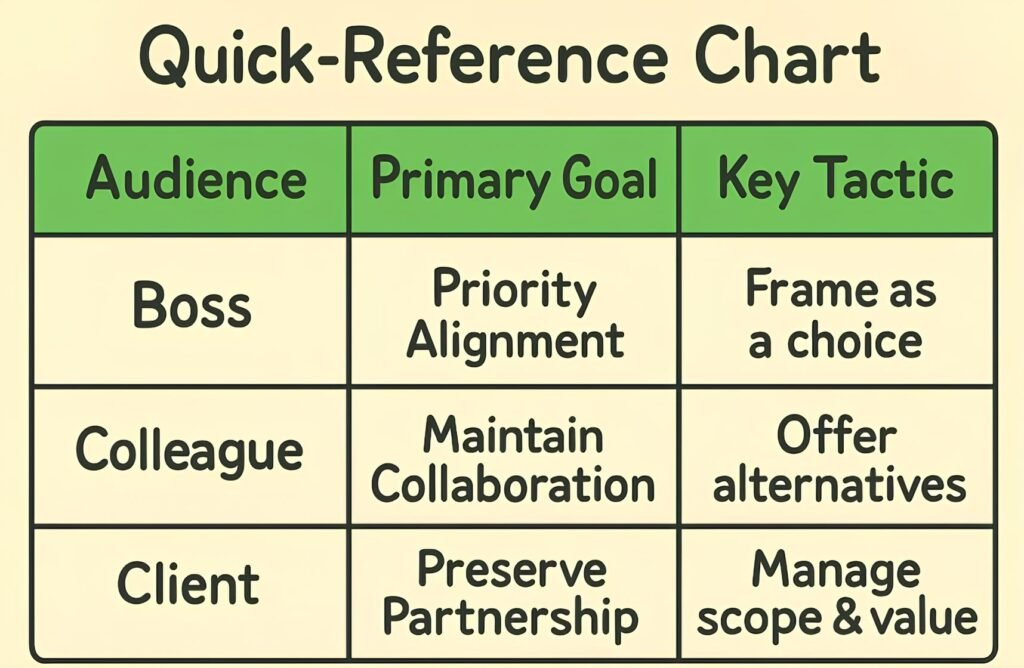
Conclusion: From People-Pleaser to Strategic Partner
Learning to say “no” is one of the most powerful skills you can develop in your career. It’s a shift from reactive people-pleasing to proactive self-management.
Remember, a strategic “no” isn’t about closing doors or being difficult. It’s about being anchored in a stronger “yes”—a “yes” to your most important priorities, to the quality of your work, and to your own well-being. By setting clear boundaries, you don’t just avoid burnout; you build trust, gain respect, and create the space to do your absolute best work.
It’s the difference between seeking approval and earning respect.
What’s the hardest request for you to say “no” to at work? Share your experience or your favorite tip in the comments below!

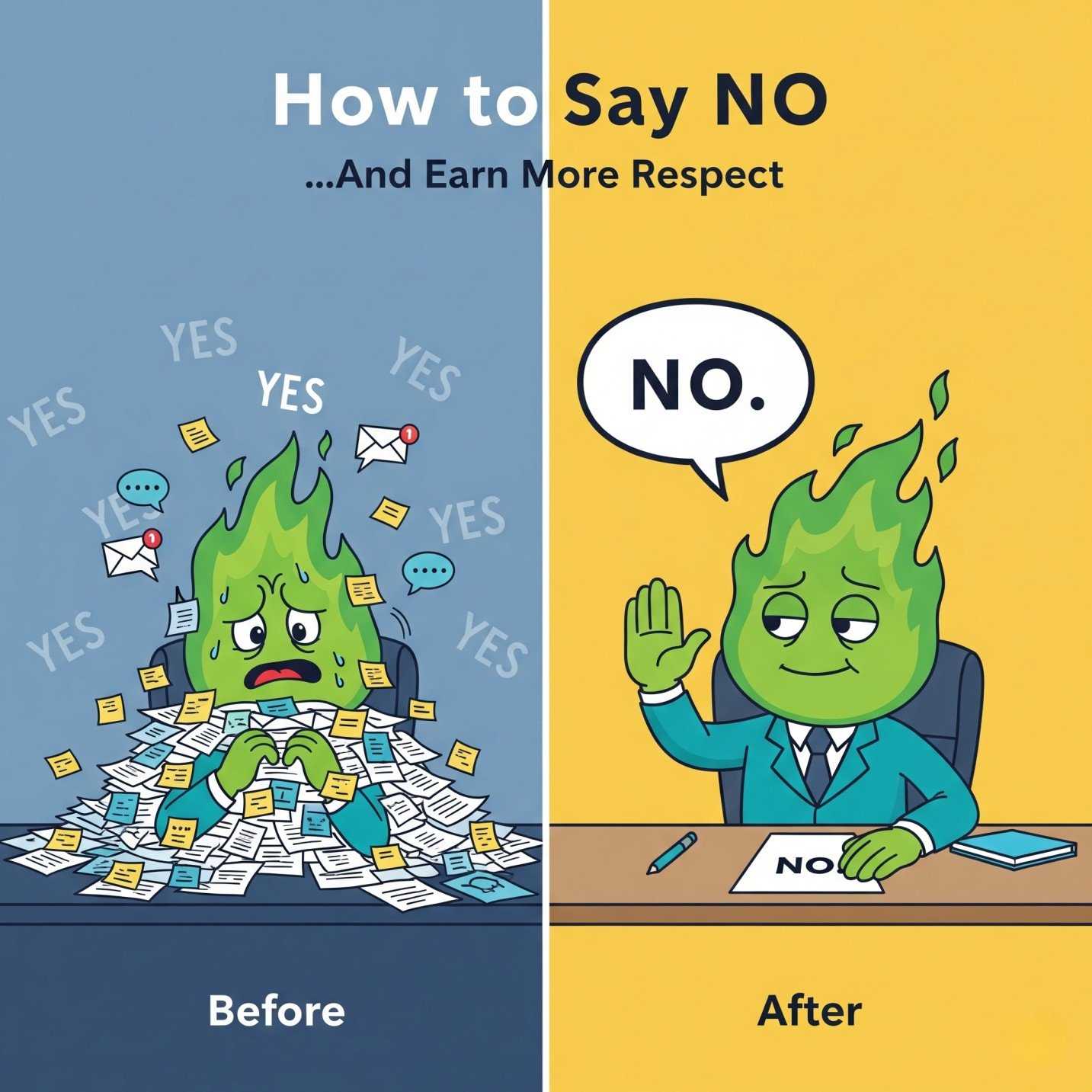

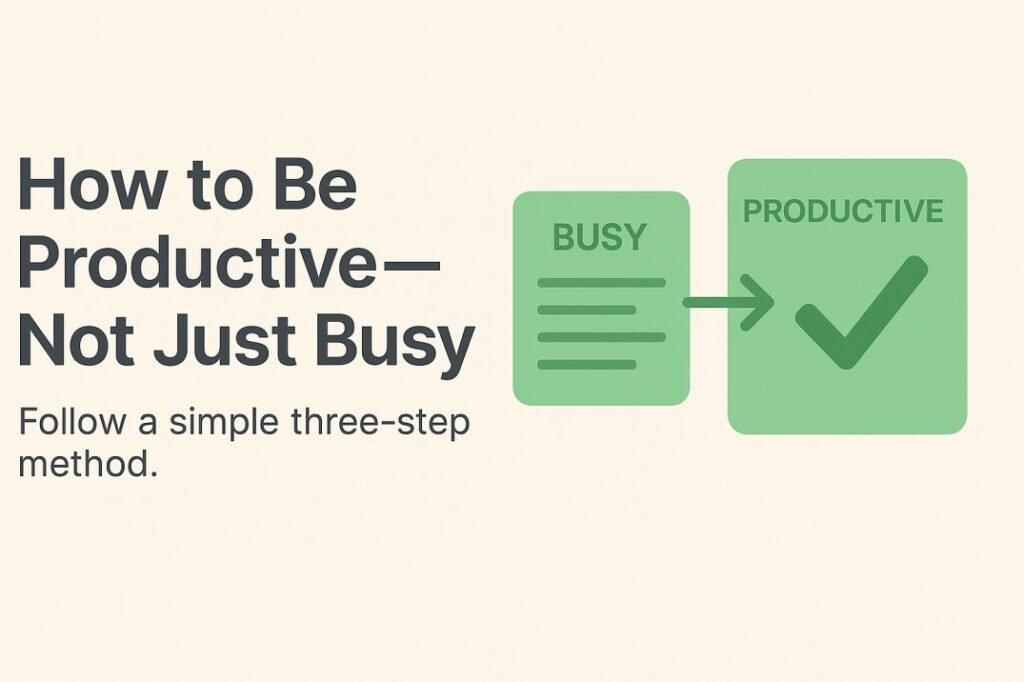
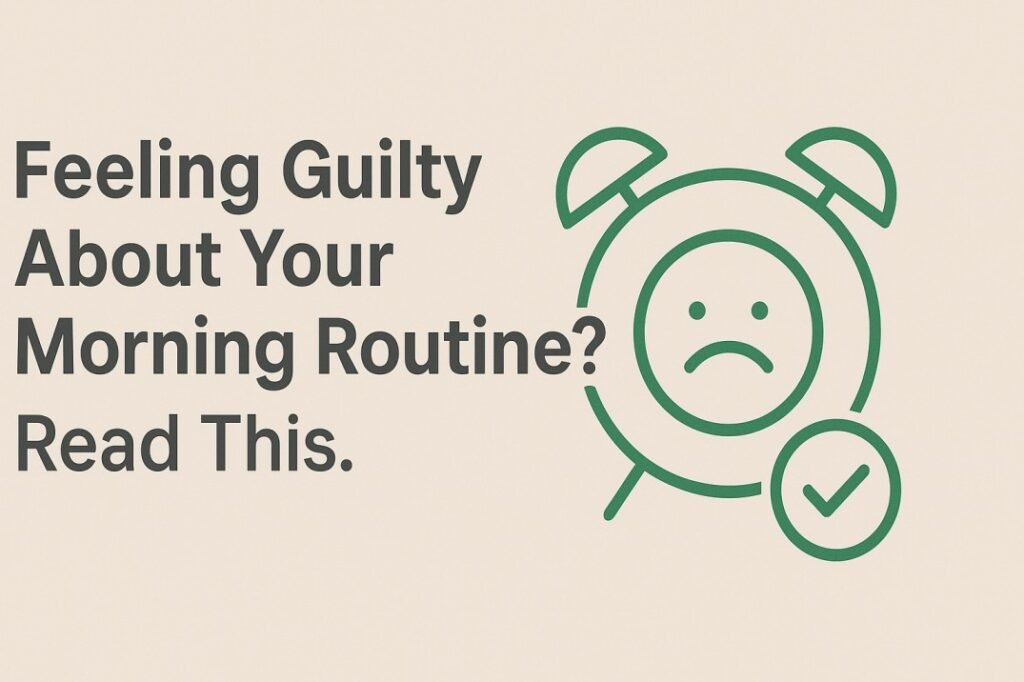
One Comment